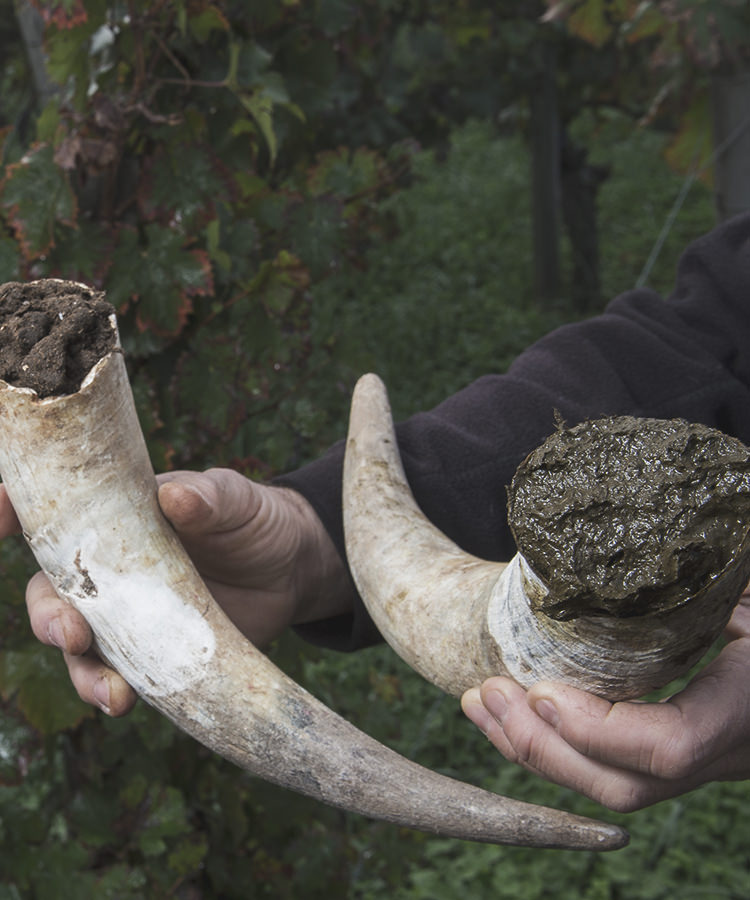In a time of drastic climate change, global warming, and all-around meteorological chaos, we all seek to be a little bit “greener.” We buy organic produce, shop with reusable tote bags, and recycle just a bit more than we used to. With sustainability and natural movements front and center in our minds, these conscientious practices are becoming more prevalent in the agricultural world, too. You may be familiar with what organic farming entails, but many of us are still wondering what exactly that weird, biodynamic movement is that so many farmers seem to be putting into practice. Find all the answers to your queries here, with this ultimate biodynamic breakdown cheat sheet.
What is biodynamic wine?
The official definition of biodynamic farming according to the Biodynamic Farming and Gardening Association is “a spiritual-ethical-ecological approach to agriculture, gardens, food production and nutrition.” Biodynamic wine is made with a set of farming practices that views the farm or vineyard as one solid organism. The ecosystem functions as a whole, with each portion of the farm or vineyard contributing to the next. The idea is to create a self-sustaining system. Natural materials, soils, and composts are used to sustain the vineyard. Chemical fertilizers and pesticides are forbidden for the sake of soil fertility. A range of animals from ducks to horses to sheep live on the soil and fertilize it, creating a rich, fertile environment for the vines to grow in. Biodynamic farming also seeks sustainability, or leaving the land in as good or better shape as they found it for future generations.
Some of these practices are proven scientifically, like organic practices. But despite the scientific- sounding name, some of the biodynamic practices are harder to prove scientifically. “A part of the scientific community looks at the [biodynamic] method with skepticism and marks it as dogmatic,” write the authors of a 2009 study in the Journal of Renewable Agriculture and Food Systems. It’s been tough to isolate the biodynamic features, making it tough to study how they are affecting yields. But the 2009 study concluded that further study was needed, though a fair share of the available studies show that biodynamic farming did have an impact on yield, soil quality, and biodiversity. Biodynamic preparations were also found to express a “positive environmental impact in terms of energy use and efficiency.”
When did biodynamic farming start?
Austrian philosopher Rudolf Steiner started the idea of biodynamic agriculture in the early 1920s, predating the organic movement by a long shot. This early 20th century philosopher and social reformer also promulgated the use of agricultural practices based on the lunar calendar and astrological influences, which today are more controversial aspects of biodynamic farming. Steiner believed in living and farming together with the earth and its movements, as opposed to using a purely scientific approach. You can read more about moon science here, but it tends to fall on the side of aspects of biodynamic farming that are harder to prove scientifically.
How do you make biodynamic wine?
Biodynamic wine is made by farming all components of the vineyard as one whole entity, eliminating the use of chemicals and using natural materials and composts. Following the biodynamic calendar is another integral part of the process. Sometimes, these farming practices, from pruning to harvesting, are controlled by the biodynamic calendar. It breaks all the tasks associated with farming into four kinds of days: root days, flower days, fruit days, and leaf days. Each of these days has certain tasks associated with it that are reflective of Earth’s four classical elements (also on the harder-to-prove-scientifically end of things): Fruit days are meant for harvesting, leaf days for watering, root days for pruning. On flower days, the vineyard is left alone.
Why is there a cow horn in the vineyard?
Biodynamic farming calls for specific and sometimes strange compost and field preparations. One of these is known as cow horn manure or preparation 500. Cow horns are stuffed with manure compost and buried into the ground all through the winter, then later excavated. Upon excavation, the stuffed material is spread throughout the vineyard. There is little information out there about why specifically a cow horn is used (never a bull’s horn), or why it’s buried in the soil. The horns are getting more and more expensive and are shipped all the way from India sometimes. According to the website Biodynamie Services, preparation 500 is “essential.” “It is a powerful means for structuring the soil,” the site explains. It also “stimulates soil microbial activity of the soil,” regulates pH, stimulates seed germination, and dissolves minerals.
Other compost preparations include yarrow, chamomile, and stinging nettles.
Is biodynamic wine the same as organic wine?
No. Both are similar in the sense that both incorporate practices without the use of chemicals. However, to keep it as simple as possible, organic wine is produced with organic grapes. Biodynamic farming takes other factors into account when farming, such as the lunar calendar and astrology. The farming is more about the entire lifeblood of a vineyard — other plants, insects, animals — not just the grapes.
How much wine is biodynamic?
There are over 700 producers worldwide that craft biodynamic wine.
What are some wine brands making biodynamic wine?
Nicolas Joly (Loire)
Sybille Kuntz (Mosel)
Montinore Estate (Oregon)
Benziger Winery (Sonoma)
Domaine Leroy (Burgundy)
Maison Chapoutier (Rhone)
Shinn Estate (New York)
Does biodynamic wine taste different?
While this is certainly a subjective question, the answer to this question is generally: no. It is nearly impossible to blind taste a wine and deduce whether biodynamic practices were implemented or not. However, many winemakers who farm biodynamically also grow organic fruit, and between the combination of lack of pesticides and implementing farming practices in tune with nature (biodynamics), biodynamic wines may have a higher-quality taste profile than other wines.
